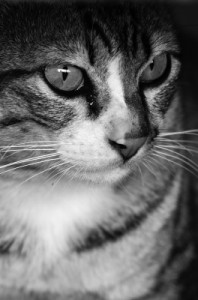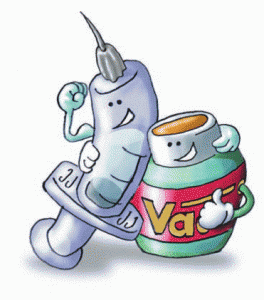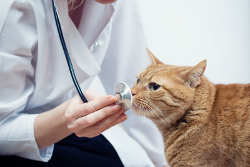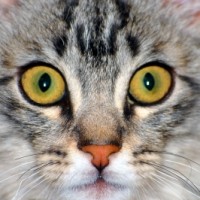Feline panleukopenia virus (FPV) is most commonly known as feline distemper. It’s a viral disease that affects both domesticated and wild species of cats. It is in the genus of feline parvovirus, which is close relative of the canine parvovirus.
What Causes FPV?
As mentioned, feline distemper is caused by a parvovirus. It is ubiquitous, meaning it is virtually everywhere. Every cat will be exposed to it at one point or another. The virus is spread through contact with the feces, urine, saliva, other bodily fluids and fomites of an infected animal.It can also be spread by fleas.
This disease can be spread between cats, ferrets and minks since they are all closely related. FPV is resistant to inactivation and can survive in room temperature for more than an entire year. It also survives being frozen. Therefore, it can reach long distances and be picked up from contact with an infected cat’s bedding, dishes, toys and other belongings.
It can also be carried on the clothing of handlers and transmitted to other cats. However, it is not zoonotic and does not infect humans.
What Are the Clinical Signs?
 Primarily, the virus attacks the gastrointestinal tract lining. This causes ulceration and shedding of the intestinal tissue. The most common signs include:
Primarily, the virus attacks the gastrointestinal tract lining. This causes ulceration and shedding of the intestinal tissue. The most common signs include:
- Profuse bloody diarrhea
- Vomiting
- Loss of appetite
- Malnutrition
- Dehydration
- Anemia
- Lethargy
- Biting of the tail, hind limbs and lower back
Often, an infected cat will sit and hang his head over his water or food bowl for an extended period of time without eating or drinking.
Other Effects of the Virus
FPV also causes a decrease in white blood cells. Thus, it compromises the cat’s immune system. A decrease in hematocrit and platelets can also be seen on a complete blood count (CBC).
Worst Case Scenarios
Terminal cases cause hypothermia. Affected cats may succumb to septic shock or disseminated intravascular coagulation (DIC). DIC is the activation of blood-clotting mechanisms in the body, which leads to a formation of blood clots inside the vessels throughout the body.
Normal coagulation is interrupted and abnormal bleeding presents when the small clots deplete coagulation platelets and proteins. A disruption of normal blood flow to vital organs may occur, leading to their malfunction.
However, more deaths are attributed to secondary infections due to the cat’s lowered immunity or to extreme dehydration as a result of excessive diarrhea.
How is FPV Diagnosed?
A vital clue in the diagnosis of FPV comes from performing a complete blood count (CBC). In a case of feline distemper, the results of the count will show a very low number or almost no white blood cells. There are very few causes for a white cell count this low and in an unvaccinated cat, presenting with the gastrointestinal issues mentioned above, confirmation of the virus usually follows. Fecal testing also aids in a diagnosis. However, a false positive result can be detected in cats that have been recently vaccinated against the virus.
 Is There Treatment Available?
Is There Treatment Available?
Yes. If a cat has been infected, survival is possible. The immune system will need to recover from the attack and suppress the virus. Aggressive antibiotic and fluid therapy will help control the virus and ward off dehydration. If the cat survives during the several days of hospitalized treatment, a full recovery is possible.
Making a Recovery
No permanent damage is sustained if a cat is able to recover from the infection and will go on having lifetime immunity. The virus is still shed for about six weeks after recovery and there is no adequate way to disinfect the cat’s environment. If there are plans to bring another cat home in the future, the new cat must be vaccinated to protect her against the virus that could very well still be thriving in the environment.
As Always, Prevention is Key
The vaccine against the virus is at the core of recommended immunizations for kittens and cats. Since this virus is ubiquitous, any unvaccinated cat will pick it up at some stage in their life. It is very difficult to kill the virus in the environment. It survives common disinfectants such as alcohol and iodine. The only way to cleanse the area or an object is with a ten-minute soak in bleach (one part bleach, 32 parts water).
Common Vaccination Schedules
Vaccines should begin to be administered after twelve weeks of age and are extremely effective in generating an immunity against infection. After the initial vaccine, booster doses are given two to four weeks apart with the final dose being administered at or after fourteen weeks of age. After which, a FPV vaccine is continued to be administered every one to three years depending on the veterinarian’s protocol and the cat’s individual circumstance.
Methods of Administration
The vaccine can be given intranasally or an injection as either a modified-live or a killed virus vaccine.
Side Effects of FPV Vaccination
The most common side effects are mild and may include:
- Loss of appetite
- Lameness
- Slight fever
- Swelling or lump at the injection site
These side effects only last a few days and are the body’s way of building immunity to the virus that has been introduced into the system.
Vaccination with a live virus should be avoided during pregnancy as certain complications can occur in the unborn kittens. Vaccinating the mother in early stages of pregnancy will cause the kittens to spontaneously abort. If the pregnancy is farther along, it causes cerebellar hypoplasia in the kittens when they are born.
Thanks for visiting www.catdandruffclinic.com, if you liked this article please like us using the side bar .
Related Posts:



Comments are closed.